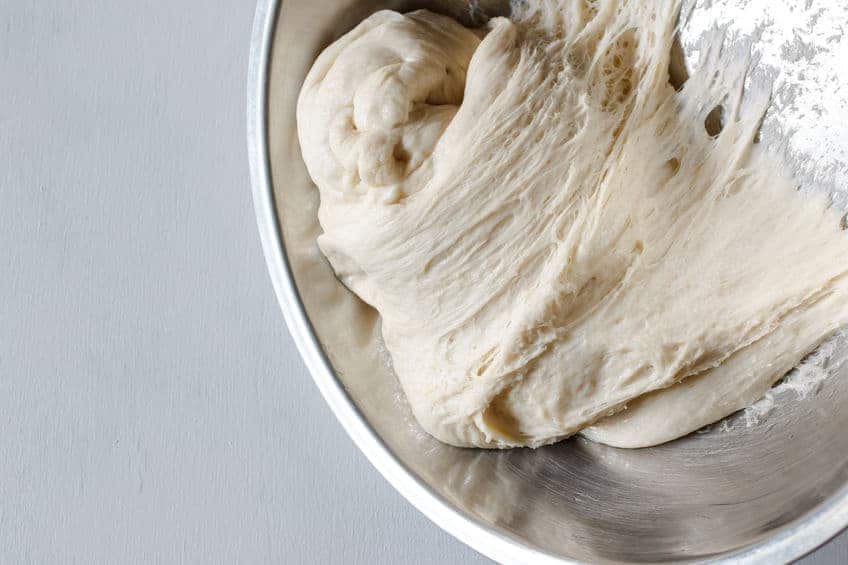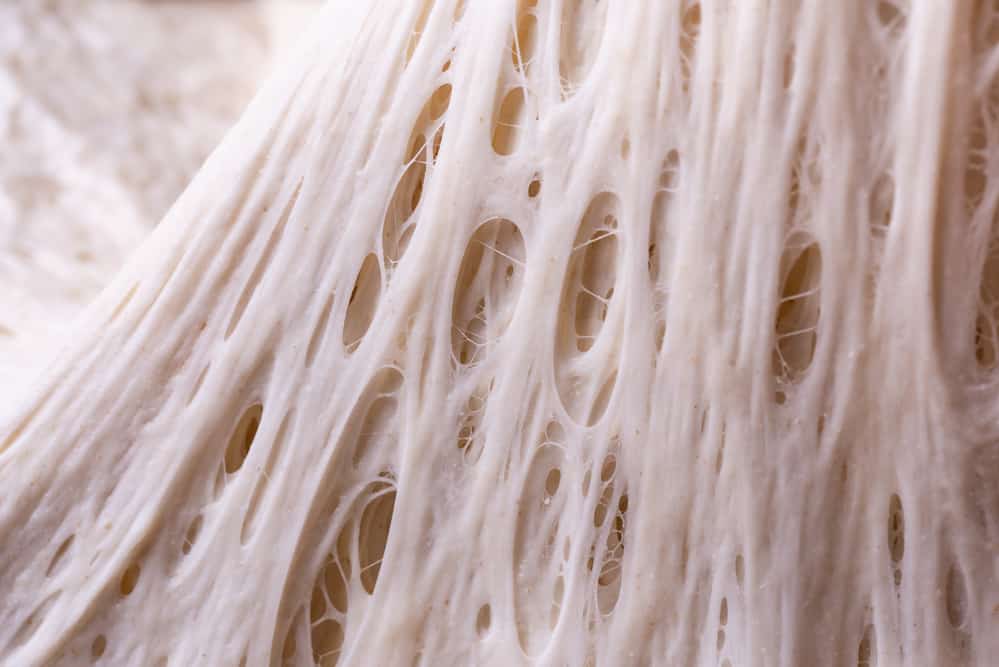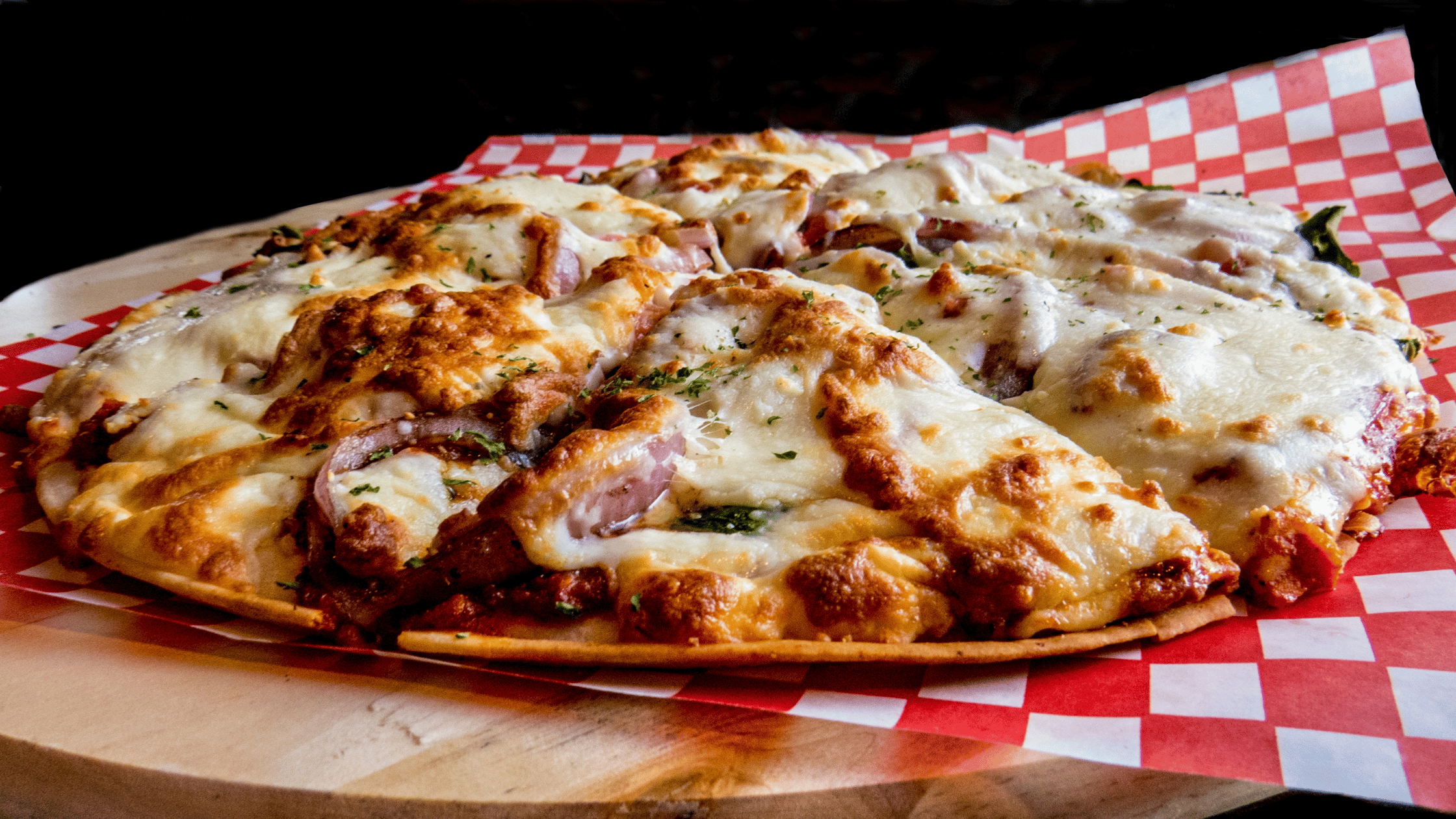Are you wondering what is gluten-free pizza?
What’s in it?
How is gluten-free pizza different from regular pizza? and so many other questions.
You will find the answer to those questions and more in this article!
So, let’s get started!
Here’s What You Will Find:
What is Gluten in Pizza?
To understand what is gluten-free pizza you need first to know what is gluten and why pizza is made without it.
What is Gluten?
Gluten is a viscous and elastic substance that is formed during the mixture of flour, yeast, and water.
Flour contains two proteins called “gliadin” and “glutenin” that are insoluble in water.
Specifically, glutenin is the protein that imparts strength and elasticity, and the gliadin adds extensibility to the dough so it can stretch and relax.
When these two proteins come in contact with water and are stressed by the energy of mixing, they bind to each other, forming gluten.
Gluten is also known as “mesh gluten” because it holds the dough together like a web or network.
Gluten is what helps the dough take shape and create a structure. It acts as a glue in the mixture. Some flours do not contain gluten, which is very difficult to handle because they have the consistency of a cream.
Mesh Gluten Network
The gluten is tense and elastic when the dough is just made, like stretching a rubber band. Then over time, the pressure of the gases produced by the leavening is released, and the dough becomes loose.
Gluten is exclusively found in wheat and only in wheat products.
Gluten is an essential structure-building protein responsible for a significant portion of the appealing quality and structure wheat-based products possess.
Because of its one-of-a-kind viscoelastic properties, manufacturing gluten-free dough that is of equivalent quality and has comparable structural characteristics is challenging.
What is Gluten-Free Pizza?
Gluten-Free pizza does not include more than 20 parts per million of the protein gluten and does not use wheat flour.
Rye, barley, triticale, and spelled are some of the other grains that contain gluten besides wheat.
Gluten-free recipes produce pizza dough that is less cohesive and elastic than traditional recipes due to the absence of gluten.
In recent years, various cutting-edge processes have been used to create gluten-free pizza.
Who is Gluten-Free Pizza for?
People living with Celiac disease may now either buy or make gluten-free pizza.
Additionally, it assists them in paying great attention to the kind of foods that they consume, therefore helping them in arriving at dietary decisions that are well-informed.
Even for those who have no problems digesting gluten, eliminating gluten from their diet has several advantages that cannot be denied.
People say that they have improved overall health and more energy and that it even helps them drop a bit of weight.
What’s the Difference Between Gluten-Free Pizza and Regular Pizza?
People who discover that they need to begin following a gluten-free diet sometimes feel they will miss out on a lot in terms of food because of this change.
Thanks to technology’s recent developments and the art of cooking, there are now a variety of tasty replacement solutions for those who are restricted from consuming gluten.
The crust used for gluten-free pizza is identical to that used for traditional handmade pizza. Therefore, the only difference is the flour used to make the dough.
On a gluten-free diet, it is common for people to continue eating dough and certain starch-based goods, provided that the dough and starches do not include gluten.
When making a gluten-free pizza, you use a special dough created using gluten alternatives for protein and consistency, such as beans or eggs. This dough is what you use for the gluten-free pizza crust.
Is Gluten-Free Pizza Healthier than Regular Pizza?
The question of whether or not adhering to a gluten-free diet offers significant health benefits to individuals who are not intolerant to protein is the subject of ongoing research.
Gluten-free diets have shown promise as a method for promoting weight loss, improved digestive health, enhanced athletic performance, and overall improvement in health.
Although these assertions need to be supported by additional research from the scientific community, gluten-free alternatives might offer some other health advantages.
Considering all of this, regardless of your diet, you shouldn’t have any trouble enjoying a gluten-free pizza. Always consult your primary care physician before beginning a gluten-free diet.
Gluten-free refers to a diet that does not include the protein gluten, which is found in the majority of grains.
Gluten is the primary source of protein in cereal grains like wheat, among others. Bread, pasta, and alcoholic beverages like beer and ale are some of the more common foods containing gluten.
Many individuals, for various reasons, have made the conscious decision to avoid gluten in their diet.
They may have family members or friends who are allergic to it at home, so they’ve decided to eliminate it from their diet to lower the allergen count in the house.
A gluten-free diet is lighter and better for your digestive system. The nutrients imparted in the food you eat are better absorbed into your systems, and distributed straight throughout the remainder of your body, including your brain.
The consumption of fast food, which often contains a significant amount of wheat-based products, is detrimental to your health and may impair several body systems. Gluten may cause a spike in blood glucose levels and other complications.
What is Gluten-Free Pizza Made With?
Gluten-free pizza is created using ingredients that do not contain gluten. Almond and rice flour are some examples of gluten-free flour and starches that are often used to make gluten-free pizza.
In most situations, gluten-free pizza is created using a mix or a blend of these flours.
Before being baked, these are mixed with wet components such as oil and flavorings like sugar and salt. Specific recipes require yeast so that the dough would rise.
Several distinct approaches may be used when preparing pizza that does not include gluten. One approach is the usual dough method, in which different types of flour, liquid, and a rising agent like yeast are mixed to make dough.
Psyllium husk powder is one example of an extra ingredient that you might add to the dough to provide some elasticity characteristics of conventional pizza dough.
The traditional recipe for pizza dough requires around 60 to 65 percent hydration.
However, for gluten-free pizza, you’ll need a much greater hydration percentage ratio, maybe around 130 percent, to prepare the dough for the pizza crust. Because gluten-free flours often have a high absorption rate, this ratio may produce a dense pizza that lacks texture.
The crust will have a superior texture due to the additional wetness, making it more difficult to form into the desired shape. You must work with the dough on an oiled surface and spread it with a rubber spatula or by hand.
Does Gluten-Free Pizza Taste Like Regular Pizza?
Rice flour is used to make gluten-free pizza, and this offers the crust the same feel that we’ve all grown to know and love when biting into a freshly baked pizza.
It has a flavor that is very similar to that of regular pizza, which means that you are still receiving the pizza flavor. Whether you purchase a traditional pizza or gluten-free, those will provide you with the same pizza experience.
What is the Difference Between Gluten-Free Flour and Regular Flour?
The main difference between gluten-free and regular flour is their main ingredients.
Gluten-free flour is made from crops that do not contain gluten. These are classified as “pseudocereals” because they can be ground and used as flour. Gluten-free flours include rice, tapioca, potato, soy, and sorghum.
On the other hand, regular flour is made from wheat, particularly Durum, which is high-gluten wheat.
Gluten-free flours are said to be healthier, especially for individuals who have celiac disease, people who are sensitive to gluten but do not have celiac disease, and people who are avoiding gluten for reasons other than celiac illness.
They may choose wheat- and gluten-free flour options that are just as nutritious as conventional flour.
Here are a few examples of the different ingredients in gluten-free flours:
- The main ingredients in the King Arthur blend are rice flour, sorghum flour, tapioca starch, and potato starch.
- The main ingredients in Bob’s Red Mill 1-to-1 blend are sweet rice flour, brown rice flour, potato starch, and sorghum.
- The main ingredients in the Krusteaz gluten-free blend are sorghum flour, brown rice flour, millet flour, and rice flour.
Some gluten-free flours are packed with more nutrients than others, making them a better option to include in your diet than others.
For many gluten-free flours, the final product must either modify the recipe or have a mixture of many gluten-free flour types to taste well. Be careful to assess your recipe.
It is crucial to evaluate the recipe’s nutrition, flavor, and overall makeup before deciding which gluten-free flour to use and whether you prefer to use it or are required to.
Here’s What the PROs at Homemade Pizza Pro Use and Recommend
Your everyday gluten-free flour. The essential pantry staple for gluten-free baking. Perfect for converting your favorite recipes into gluten-free versions. Simply substitute this flour 1-1 for an easy and convenient swap for conventional flours. Fortified with iron calcium and vitamin B, this carefully tested blend is a must-have for bakers who are new to gluten-free baking or anyone baking gluten-free who wants to enjoy recipes they used to love. Ideal for muffins, cookies, cakes, brownies, pancakes, and other non-yeasted recipes.
What Cheese is Gluten-Free?
Cheese is confusing for many individuals who adhere to a gluten-free diet. Even though gluten is not typically found in cheese, checking the ingredients list on any packaged or processed cheese before consuming it is critical.
In most cases, cheese does not contain gluten. Some have hypothesized that mold cultures used in cheese could have been grown on wheat or rye bread; therefore, it is essential to read the label specifying the ingredients.
In general, cheese should be safe to eat unless the ingredients label specifies that it contains wheat, barley, rye, or any derivatives of these grains.
Mostly, mozzarella, parmesan, and cheddar cheese do not contain gluten. Some may contain starch or cellulose to keep the shreds from sticking together.
However, the starches and cellulose utilized in producing these cheeses typically do not contain gluten.
If you are unsure about a specific brand of cheese, read the label to determine whether it contains any gluten-containing ingredients, such as wheat, barley, or rye.
Is Pepperoni Gluten-Free?
Gluten can’t be found in pepperoni; thus, it’s safe to eat.
However, gluten contamination is possible via cross-contact with other toppings, and some spices may contain gluten. Always make it a habit to double-check the product’s packaging to ensure that it does not contain gluten.
Hormel and Bridgford Pepperoni are just a few pepperoni brands available in gluten-free varieties. Vegetables like artichokes and peppers are among the gluten-free meat substitutes you may use instead of pepperoni.
The Last Slice
You’ve probably noticed that gluten-free products, like gluten-free pizza, gluten-free frozen yogurt, and even gluten-free beverages, have grown more common in recent years as the gluten-free diet has become both a trend and a marketing strategy.
Gluten-free meals are available at restaurants of all types and price ranges, and there’s a solid reason for this: they’re better for your health.
Additional Resources on Gluten
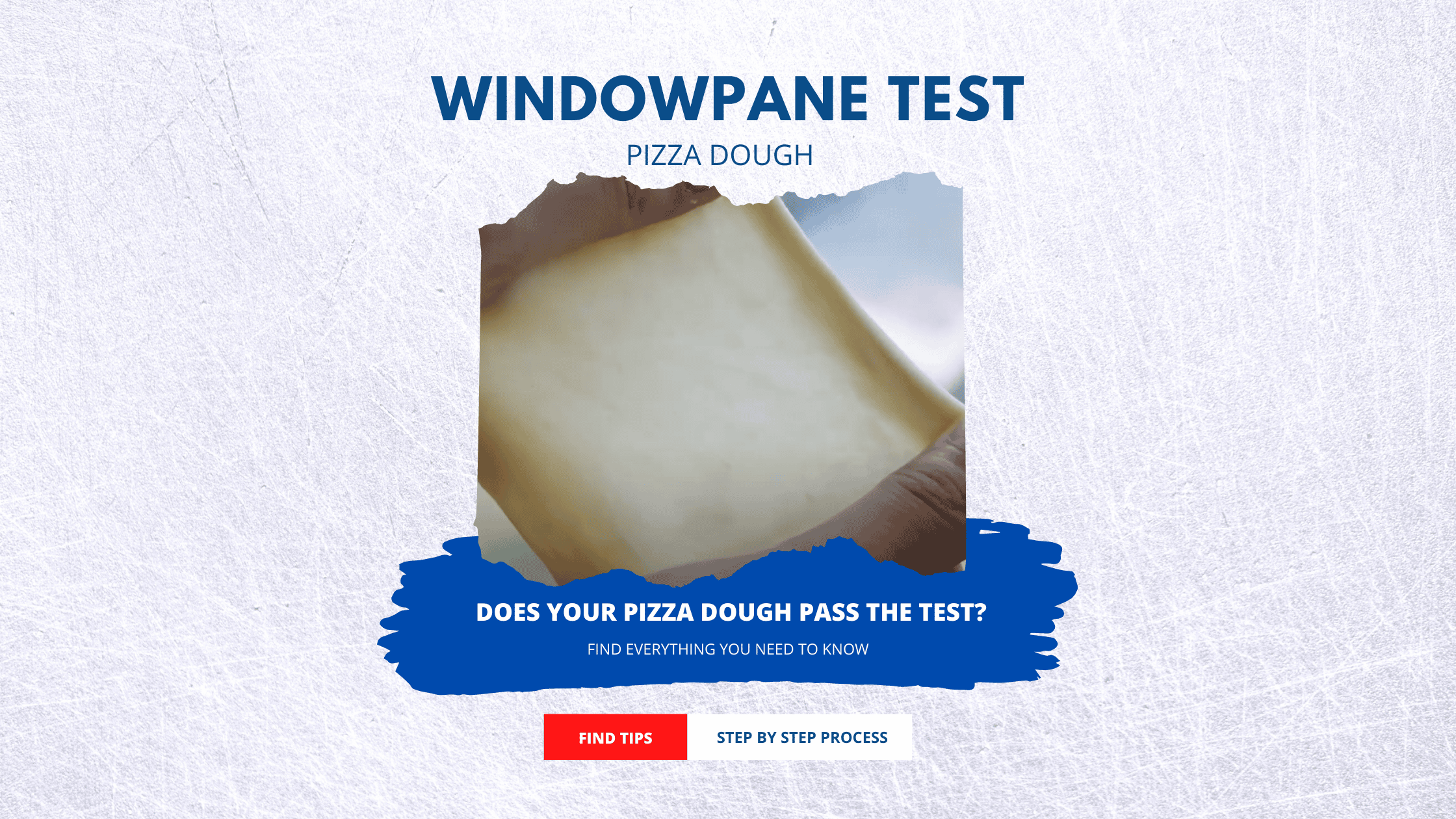
Windowpane Test: (Tips, How-to, and Everything You Need to Know)
the PROs
Pizza Dough Windowpane Test Kneading the dough is probably one of the most complex parts of baking a pizza. You …

Demystifying Gluten in Pizza. Here’s What You Need to Know
the PROs
Understanding what gluten does and how to develop gluten in pizza crust will take you far along your journey to becoming a homemade pizza pro. So, if you are ready to master the art of making pizza dough, read on to discover what savvy pizza chefs know about gluten and how to transform it into delicious pizza crust!
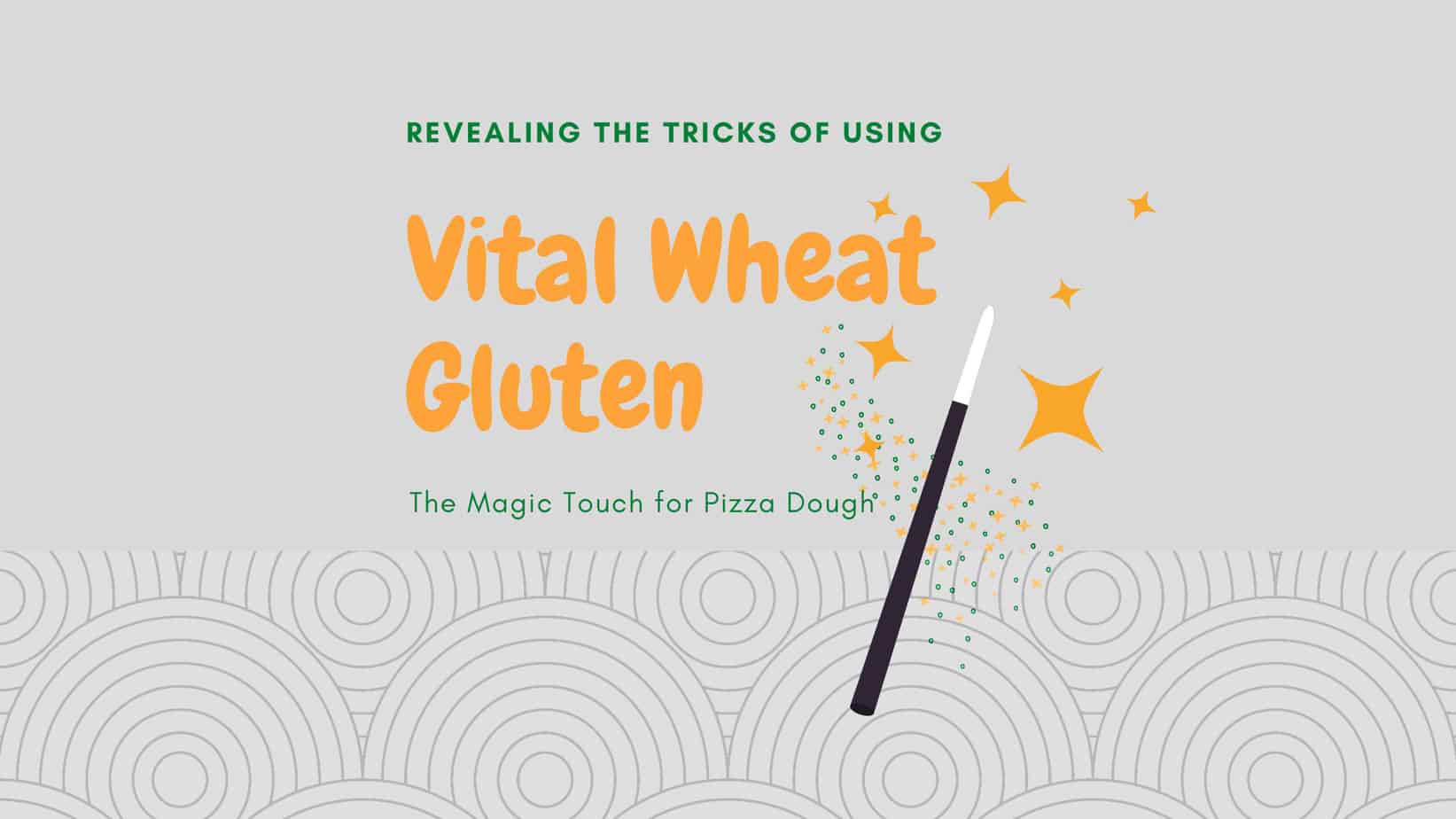
Vital Wheat Gluten: The Magic Touch for Pizza Dough
the PROs
Is your homemade pizza dough missing something? Maybe it’s not rising enough, or it’s not holding its shape as you’d like it to, or it’s just too crumbly. Perhaps you want it to be softer on the inside or crispier on the outside, or you wish it were higher in protein. Don’t worry! All these factors and more can be addressed by adding extra gluten to your recipe. Here’s our guide to everything you need to know for using vital wheat gluten in pizza dough! So let’s get started!
Enjoy!
Not a PRO? Not a Problem!
Take a pizza class to bring your pizza skills to the next level,
so you can be a PRO!
Related Posts

Costco Pizza Delivery: Find How You Can Get It Now!
the PROs
People go to Costco’s food court for many different reasons, but the cheesy slice of pizza they serve is among …

Pizza for Beginners: Don’t Buy Pizza, Make It! Here’s How to Get Started!
the PROs
You have this idea that you want to make pizza at home as opposed to ordering it, but where do you start? Don’t worry! Here you will find answers and directions to all your questions.

Pizza Toppings Under Cheese or Over Cheese? [Why the Order Matters]
the PROs
Is Pizza Cheese on Top or Bottom? Hey pizza lovers, are you wondering if you should layer pizza toppings under …
Newsletter
Subscribe to our Recipe of the Week newsletter and receive our partners’ latest recipes, tips, and discount offers.
Keep in Touch!

